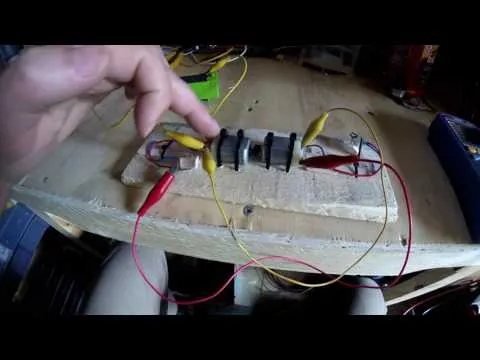You see this all the time. A motor turning a generator endlessly producing power. Its free energy right?
I performed the experiment to see what would happen. I had an idea based on the fact that you are going to have loss in the lines due to mechanical resistance, heat and other issues in a DC motor.
But I wanted to try this out anyway.
I connected up two DC motors. One motor is powered by a battery and the other motor is driven by the first motor. The second motor is supposed to act like a generator and back feed energy into the first motor to keep it spinning.
The problem with this setup is that in order to get power out of a DC motor, you have to spin it faster than its rated run speed. Since you cannot run the motor powering the device any faster without damaging it, you cannot produce any useful energy from the generator motor. At least not enough to power the drive motor.
Now this experiment does not disprove the idea overall. But with a standard DC motor, this cannot work.
I have some ideas using a super efficient pulse motor which drives a DC motor as a generator.
But then again, the Bedini motor I experiment with can be set up as a motor/energizer. The pulse motor is super efficient. But you cannot pull energy out of the generator/energizer at the same time the drive motor is receiving power. The system bogs down.
If you can pulse the output from the generator into batteries to be charged, in between the drive motor pulses, then maybe you can pull out some power.
But that is an experiment for another day.
Another future experiment is to fine tune a DC motor in order to reduce the losses caused by Back EMF.
Stay tuned and follow my channel for more experiments.
Please Subscribe & follow my daily YouTube videos
Read my articles at The Do It Yourself World
NOTE: You will likely see some trolls in the comments. They follow me everywhere on and offline. Do not engage the trolls.
